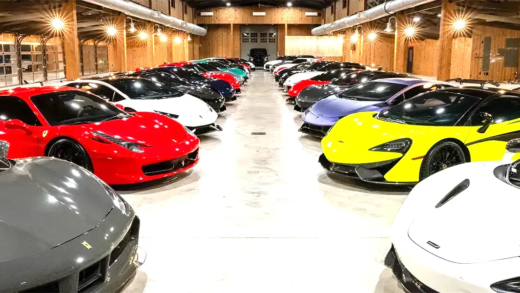Cambodian shadow puppetry, or ‘Sangkhannay’, is a captivating art form that combines storytelling, music, and visual elements. This tradition, rooted in ancient history, has evolved while preserving its cultural significance. Key figures like Master Chhay Bora and organizations such as Phare Ponleu Selpak play crucial roles in teaching and passing down this art. Common themes in performances include moral lessons and social commentary, reflecting Cambodian values. Festivals like Bon Om Touk showcase the art, making it accessible to audiences today, both in person and online.
What is Cambodian Shadow Puppetry?
Cambodian shadow puppetry, known as “Sangkhannay”, is a traditional art form that has captivated audiences for centuries. It involves the use of intricately crafted puppets made from leather, which are manipulated behind a translucent screen to create enchanting stories illuminated by light. This ancient practice is not merely entertainment; it serves as a vital means of cultural expression and storytelling in Cambodian society.
At its core, Cambodian shadow puppetry combines elements of theater, music, and visual art, making it a unique and multifaceted experience. The performances often depict historical tales, folklore, and moral lessons, showcasing the rich heritage of Cambodia. Audiences are drawn to the delicate movements of the puppets and the accompanying live music, which together create a mesmerizing atmosphere.
How Does Cambodian Shadow Puppetry Work?
The mechanics of Cambodian shadow puppetry are fascinating. Puppeteers use a series of rods to control the puppets, allowing them to move gracefully across the screen. Each puppet is designed with articulated joints, enabling a wide range of motion. The puppeteers often perform in pairs, synchronizing their movements to bring the characters to life.
Lighting plays a crucial role in this art form. A strong light source, typically an oil lamp or modern bulb, casts shadows of the puppets onto the screen. The shadows can vary in intensity and clarity, enhancing the visual impact of the performance. The puppeteers also rely on vocal narration and sound effects to enrich the storytelling experience, creating an engaging atmosphere for the audience.
Materials Used in Cambodian Shadow Puppets
Creating Cambodian shadow puppets involves meticulous craftsmanship. The primary material used is cowhide, chosen for its durability and ability to transmit light. Artisans carefully treat the leather, cutting it into intricate shapes that reflect the characters and stories being portrayed. Decorative elements, such as colorful paints and embellishments, are often added to enhance the visual appeal.
- Cowhide: The main material for crafting puppets, known for its flexibility and strength.
- Wooden rods: Used to manipulate the puppets during performances.
- Paints: Bright colors are applied to the puppets to create striking visual effects.
Each puppet is a work of art, reflecting the skill and creativity of the artisan. The combination of materials and techniques not only brings the puppets to life but also preserves the cultural heritage of Cambodia, making shadow puppetry a cherished tradition.
Historical Origins of Cambodian Shadow Puppetry
Cambodian shadow puppetry, or Sangkhannay, has deep historical roots that trace back to ancient times. This traditional art form likely originated from the Hindu and Buddhist influences that permeated Southeast Asia. The oldest records suggest that shadow puppetry was practiced as early as the 6th century, influenced by similar traditions in India and Java. It is believed that these performances were initially used in religious ceremonies and rituals, serving as a means to convey spiritual messages and teachings.
As time progressed, Cambodian shadow puppetry evolved into a popular form of entertainment, reflecting the cultural and social dynamics of the Khmer Empire. The intricate stories told through puppetry often depict tales from the Ramayana and Mahabharata, two ancient epics that resonate with Cambodian folklore. This connection to history has made shadow puppetry a vital part of Cambodia’s cultural identity.
Evolution Over the Centuries
The evolution of Cambodian shadow puppetry mirrors the historical changes within the country itself. During the Angkor period, the art flourished, with performances becoming elaborate and highly stylized. The puppets were crafted with great detail, often adorned with vibrant colors and intricate designs, showcasing the artisans’ skill and creativity.
However, the Khmer Rouge regime in the 1970s posed a significant threat to this cultural heritage. Many artists were lost, and the tradition nearly vanished. Fortunately, in the years following the regime, efforts were made to revive Cambodian shadow puppetry. Today, it has seen a renaissance, with new generations of puppeteers infusing contemporary themes while respecting traditional narratives.
- Historical Influence: Early performances tied to religious rituals.
- Artistic Flourishing: Golden age during the Khmer Empire.
- Revival Efforts: Post-Khmer Rouge initiatives to restore the art.
Cultural Significance in Cambodian Society
Cambodian shadow puppetry holds immense cultural significance, serving as a bridge between generations. It plays a crucial role in preserving stories, morals, and historical narratives that define Cambodian identity. The performances often address social issues and cultural values, allowing audiences to reflect on their heritage and collective memory.
Moreover, shadow puppetry is a communal experience, fostering a sense of unity among spectators. Festivals and performances often bring together families and communities, reinforcing social bonds and cultural pride. As such, this art form is not only a source of entertainment but also a vital tool for cultural education and preservation.
- Preservation of Heritage: Stories reflect Cambodian values and history.
- Community Engagement: Festivals unite people through shared experiences.
- Cultural Education: Teaching younger generations about their heritage.
Key Figures and Performers in Cambodian Shadow Puppetry
Cambodian shadow puppetry thrives due to the dedication of skilled artists who have preserved and evolved this ancient craft. Notable figures in this field include Master Chhay Bora, a prominent puppeteer known for his innovative storytelling techniques and commitment to reviving traditional narratives. His performances often draw large audiences and inspire younger generations to engage with this art form.
Another key figure is Phare Ponleu Selpak, an organization that trains young artists in shadow puppetry, ensuring that the craft continues to flourish. These artists not only perform but also contribute to the cultural landscape of Cambodia through workshops and community engagement.
- Master Chhay Bora: A leading puppeteer known for his captivating performances.
- Phare Ponleu Selpak: An organization dedicated to teaching shadow puppetry.
- Young Artists: New generations of performers bringing fresh perspectives.
These key figures play a crucial role in keeping the tradition alive, blending historical techniques with contemporary themes, thus ensuring the relevance of Cambodian shadow puppetry in today’s society.
Common Themes in Shadow Puppet Shows
Cambodian shadow puppet shows often explore universal themes that resonate deeply with audiences. Common narratives include tales of love, valor, and morality, frequently drawing from the rich lore of Ramayana and Mahabharata. These epic stories serve not only as entertainment but also as moral lessons that reflect cultural values.
Additionally, shadow puppetry addresses social issues, providing commentary on contemporary life and community challenges. Performances often depict the triumph of good over evil, a motif that reinforces hope and resilience within Cambodian society.
- Epic Tales: Stories from the Ramayana and Mahabharata.
- Moral Lessons: Themes of virtue and ethics.
- Social Commentary: Reflections on modern Cambodian life.
By intertwining these themes with vibrant visuals and live music, shadow puppet shows become a powerful medium for storytelling, fostering a sense of identity and continuity in Cambodian culture.
Teaching and Passing Down the Art of Shadow Puppetry
Passing down the art of Cambodian shadow puppetry is essential for its survival. Educational initiatives, such as workshops led by experienced puppeteers, play a vital role in training the next generation. These programs teach not only the mechanics of puppetry but also the cultural significance behind the stories and performances.
Institutions like Phare Ponleu Selpak offer comprehensive training, blending artistic skills with cultural education. Young learners are encouraged to explore their creativity while respecting traditional techniques, ensuring that the art form evolves while remaining grounded in its roots.
- Workshops: Hands-on training for aspiring puppeteers.
- Mentorship: Experienced artists guiding newcomers.
- Cultural Education: Emphasizing the importance of heritage.
This commitment to education ensures that Cambodian shadow puppetry continues to thrive, fostering a community of artists who appreciate and innovate within this cherished tradition.
Famous Performances and Festivals
Experiencing Cambodian shadow puppetry is a must for anyone interested in the cultural arts. Numerous festivals celebrate this art form, with events showcasing performances that attract both locals and tourists. Notable festivals include the Bon Om Touk (Water Festival), where shadow puppetry often features prominently, and the Angkor Wat International Festival, which highlights traditional arts.
These events provide an opportunity for audiences to witness the craftsmanship of puppeteers and the intricate storytelling that characterizes shadow puppet shows. Many performances take place in open-air settings, creating an immersive experience enhanced by the communal atmosphere.
- Bon Om Touk: A festival celebrating water and culture.
- Angkor Wat International Festival: Showcasing traditional arts, including shadow puppetry.
- Local Performances: Various venues offer regular shows for audiences.
Attending these performances not only entertains but also enriches understanding of Cambodian culture, making shadow puppetry an essential experience for visitors.
Experiencing Cambodian Shadow Puppetry Today
Today, Cambodian shadow puppetry continues to thrive, thanks to the dedication of artists and cultural organizations. Visitors to Cambodia can engage with this art form through various avenues, including live performances, workshops, and cultural exhibitions. Many puppet theaters now offer interactive experiences, allowing audiences to try their hand at puppeteering.
Moreover, the rise of digital platforms has expanded the reach of shadow puppetry, with performances available online, making it accessible to a global audience. This adaptation not only preserves the tradition but also introduces it to new fans worldwide.
- Live Performances: Attend shows at local theaters.
- Workshops: Participate in hands-on puppetry experiences.
- Online Content: Explore performances and tutorials digitally.
In this way, Cambodian shadow puppetry remains a vibrant and dynamic art form, inviting everyone to discover its magic and cultural significance.





Comments are closed.